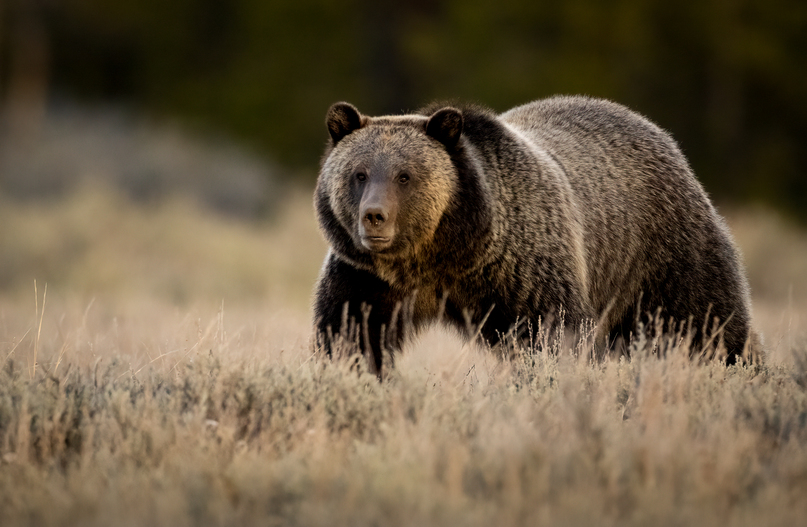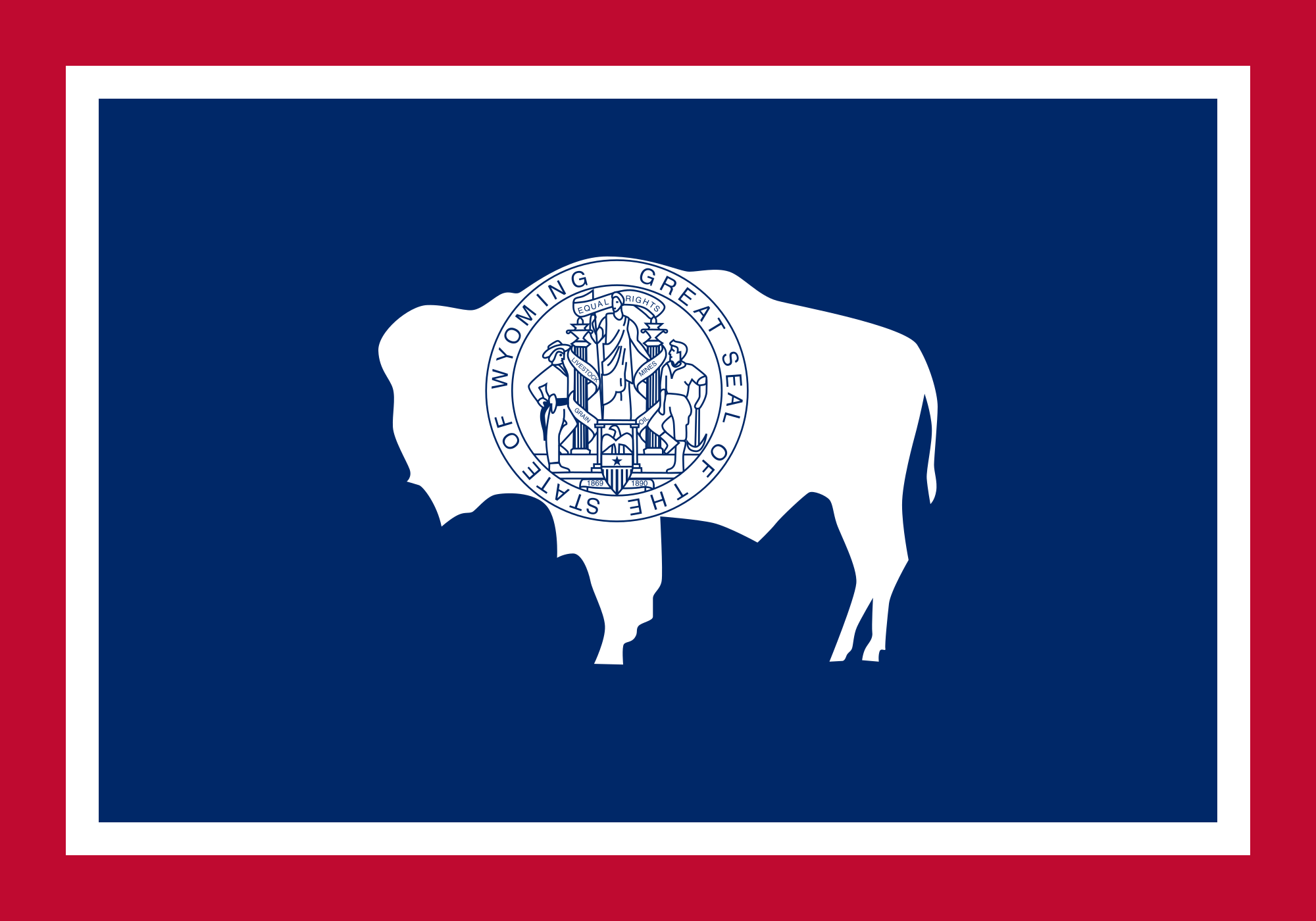Grizzly legislation claws its way forward
By Wyoming News Exchange
August 5, 2025

A grizzly bear in Grand Teton National Park. (Courtesy Photo GTNP)
By Marit Gookin
Lander Journal
Via- Wyoming News Exchange
LANDER — In July, a bill narrowly passed the U.S. House Committee on Natural Resource on a 19-20 vote along party lines. All proposed amendments to the bill failed, and it advanced to the U.S. House of Representatives for debate and voting as-written: Grizzly bears will be delisted, the bill declares, and that decision is not to be subject to judicial review.
An amendment that would have required more consultation with tribes when making grizzly bear management decisions was also among those tossed by the committee.
The bill’s forward progress was soon joined by another bill, sponsored by U.S. Sen. Cynthia Lummis and Rep. Harriet Hageman, to rename the Endangered Species Act the Endangered Species Recovery Act.
“I want to move forward with delisting of the grizzly bears,” Hageman remarked in a WyoToday newsroom interview. “The grizzly bears have been fully recovered for over two decades … It’s time that we delist them, but the process for doing so really empowers rogue and activist judges to prevent the delisting of species despite whether they’ve recovered or not.”
But conservation and wildlife advocacy groups maintain the bill would result in a decision about grizzlies derived more from politics than science.
“H.R. 281 attempts to override the careful scientific and regulatory review of the [Greater Yellowstone Ecosystem] grizzly bear status, super-imposing Congress’s political judgment for
science and undercutting decades of work towards restoration. By barring judicial review, it also disregards and precludes the vital check and balance that the courts provide,” a letter signed by 50 groups, including Wyoming Untrapped, Wyoming Wildlife Advocates, and the Endangered Species Coalition, reads in part.
“Washington bureaucrats have lost sight of the original mission of the Endangered Species Act,” Lummis said in a press release about the bill that proposes the word “Recovery” be added to the name of the act. “Instead of celebrating recovery success by removing federal intervention, they’ve created a system that keeps species listed indefinitely. The Endangered Species Recovery Act refocuses this law on its original purpose: recovering species and then getting the federal government out of the way. States like Wyoming have proven track records in wildlife management, and when species recover, we should celebrate that success by allowing appropriate local management to resume.”
The two bills were likely in part prompted by a decision made earlier this year not to delist grizzly bears in Wyoming or Montana despite petitions from both states.
While grizzly populations in other areas are still recovering, scientists and wildlife managers broadly agree that the grizzly populations of the Greater Yellowstone Ecosystem and the Glacier area are recovered.
Six recovery zones into one
In January, the U.S. Fish and Wildlife Service released a plan proposing to keep grizzly bears listed as an endangered species in Wyoming, Montana, Idaho, and Washington, and delist them in the rest of the contiguous United States (including in other parts of the grizzly bear’s historic range in states that neighbor current grizzly populations).
This plan was not finalized but released in order to allow for public comment.
However, many looked on the plan as the roadmap the FWS would likely use to move forward.
At the time, some conservation groups praised the plan put forward by the FWS as a step in the right direction.
“The U.S. Fish and Wildlife Service’s January 8, 2025, decision to keep grizzly populations protected under the [Endangered Species] Act and proposed next steps highlights the unique needs of grizzlies and charts a durable path for improved co-management with states so that communities have the best available tools for living alongside bears,” Matt Cuzzocreo with the Greater Yellowstone Coalition wrote. “This decision recognizes the success of decades of investments and community-based conservation efforts, and the need for continued collaboration.”
While grizzlies were formerly managed in six distinct recovery zones, this proposal made a single new recovery zone – meaning that bears across all four states would be managed as a single group, despite at times long distances between the different bear populations.
Some wildlife advocacy groups have argued – and the courts have agreed – that links between these population groups are important. Bears that are roaming away from one center of grizzly population toward another can interbreed with the other group, improving overall genetic diversity among the West’s grizzly bear population as a whole.
“Building social and political carrying capacity is just as important as the biological carrying capacity. Grizzlies in the Greater Yellowstone Ecosystem have reached the max in all three,” Wyoming Wildlife Federation Government Affairs Director Jess Johnson commented about the decision at the time. “It’s entirely distrustful of states’ management of wildlife … I can understand being distrustful of state legislatures. What I do not understand is being distrustful of our experts on the ground.”
Decisions to keep grizzlies listed as an endangered species even in areas where their populations are recovered has contributed to tensions over the species; they are part of a broader conversation about how the Endangered Species Act works and when a species should be delisted.
Lummis and Hageman’s new bill looks to help define those parameters.
“The Endangered Species Act is a remarkable law that was created to protect and recover species,” Director of Wyoming Game and Fish Angi Bruce remarked in a press release. “While this landmark act has primarily focused on species protection over the past 50 years, this revision in the name of the act is necessary to refocus how we think about listed species and better reflect its original intent. Changing the name sets the stage for emphasizing future work on recovery.”
Grizzlies and wolves
“We need to move forward with additional modernization of the Endangered Species Act,” Hageman said in an interview. “The Endangered Species Act has been in place since 197[3]. There are some things that work very, very, very well with the ESA, and there are other things that do not. One of the things that does not work well under the ESA is the delisting of species once they’ve been recovered – and Wyoming has especially suffered through that, an example being both the grizzly bears and the gray wolf.”
Yellowstone National Park, the nation’s first national park and the second-largest in the contiguous United States, has been one of the focuses for population recovery efforts for several species.
Both the grizzly and the gray wolf have seen strides in population recoveries in the Greater Yellowstone Ecosystem since the 1970s; as those populations have recovered, they have spread out across Wyoming and the Mountain West region, inevitably coming into conflict with humans at times.
And questions have been raised about how Wyoming in particular manages predators that were formerly protected under the Endangered Species Act.
In 2009, the U.S. Fish and Wildlife Service removed wolves in Montana, Idaho, and parts of Utah, Washington, and Oregon from Endangered Species Act protections. Despite being considered part of the same population, Wyoming’s wolves were specifically excluded from this removal because the agency “determined that Wyoming’s state law and wolf management plan are not sufficient to conserve Wyoming’s portion of a recovered northern Rocky Mountain wolf population,” according to a USFWS press release published at that time.
Wyoming’s wolves have since been delisted, but just last year concerns about the state’s approach to managing the formerly-endangered predator garnered national interest.
However, despite these concerns, Wyoming’s wolf population has not declined significantly since its delisting.
According to the Wyoming Game and Fish, 2024 marked the 23rd year in a row that the state’s wolf population exceeded recovery benchmarks established by the FWS, and in recent years livestock depredation numbers have decreased significantly.
“The department’s robust monitoring program and data set provides insight into population dynamics and tells the story of wolf conservation and management,” then-Wyoming Game and Fish Director Brian Nesvik said in a 2024 press release. “Wyoming has a proven track record of successfully managing our gray wolf population, and we will continue that approach into the future.”
Grizzly bears and wolves are different and have different histories within the state – far fewer questions have been raised about the appropriateness of Wyoming’s management of its bears.
But as both were flagship species of the Endangered Species Act, and as both are predators that people can at times come into conflict with, links are often drawn between the two.
If Hageman’s bill passes, it will be just the second time a species has been delisted by a legislative act of Congress rather than a determination by Fish and Wildlife Service scientists and wildlife managers.
The first time was when Congress passed legislation delisting the gray wolf in 2011.
“Since a mere 3% of species listed under the ESA have ever been delisted, the ESA desperately needs a success story like the grizzly bear,” Hageman remarked in a press release. “The grizzly is, in fact, the poster child for how the ESA has failed in terms of what it was intended to do and how it has actually been implemented.”
H.R. 281 has yet to be voted on in the House of Representatives, and it remains to be seen whether it will advance to the Senate and potentially become the second-ever legislative delisting of a species.

